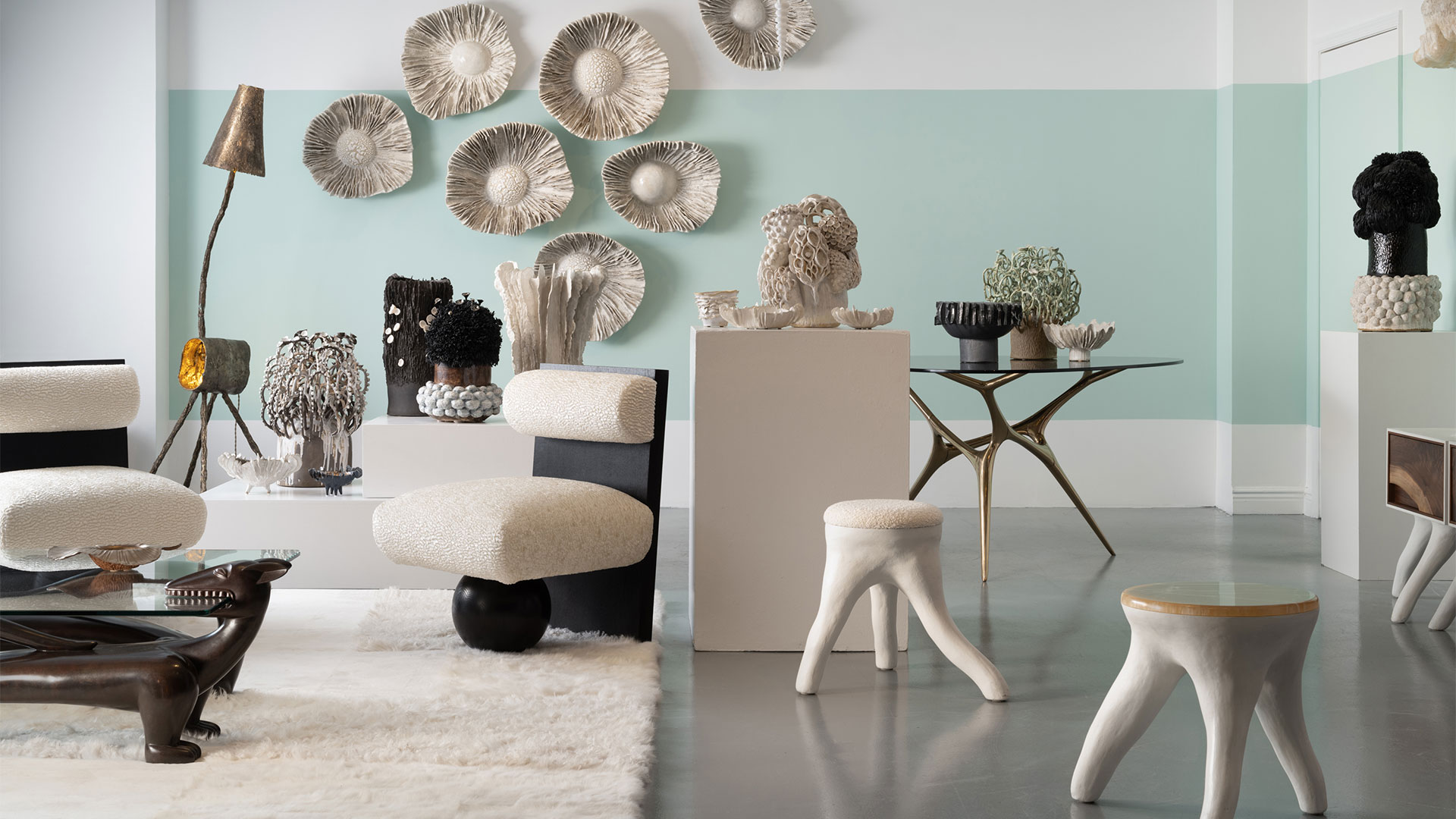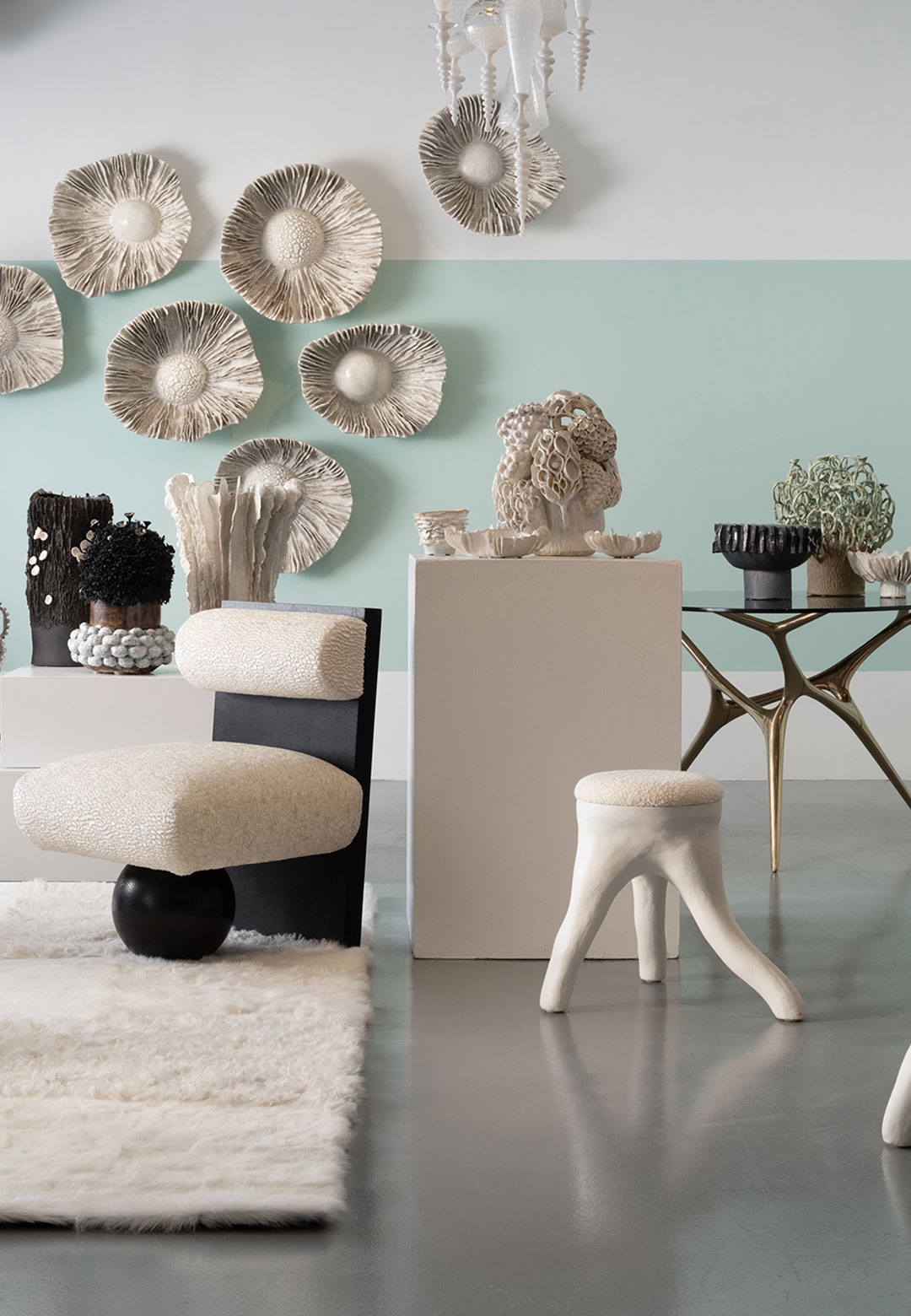The 1956 American science fiction Forbidden Planet is deemed—and rightfully so—a precursor of contemporary science fiction cinema. The foundations of the now-idolised sci-fi universe are formed by a thrilling space expedition set entirely on another planet far from our own, featuring a landscape ahead of its time—giant robots, faster-than-light spaceships, alien species, and otherworldly phenomena. The cinematic brainchild noted for its groundbreaking visual effects, electronic music and script opened the doors to an untapped realm where soaring imagination and cutting-edge scientific breakthroughs weave an awe-inspiring tapestry that has fascinated, stirred, and stimulated minds through the decades. Although science fiction has evolved exponentially and enjoys an unequivocal stature among movie buffs, some still choose to travel back to planet Altair IV and find a muse in Dr Mobius’s alien garden.
Wexler Gallery, a contemporary art and design gallery based in Philadelphia and New York, presented Forbidden Garden curated by interior designer Rodney Lawrence. The exhibition was fuelled by Lawrence’s passion for the 1950s science fiction icon Forbidden Planet. Reimagining Dr. Mobius’s alien garden in a contemporary context, Lawrence populated the milieu with eclectic works by artists and designers such as Judy Kensley McKie, Patrick Weder, Andreea Avram Rusu, Gregory Nangle, Mami Kato, and Henry Bermudez. On view from September 14 to December 9, 2022, the ensemble of the unworldly encompassed ceramic designs, rug designs, and furniture designs such as stools, tables and chairs.
The ambience of the retro alien garden morphed into a 21st-century leisure space animated with red foliage, green skies, bizarre silhouettes, and exotic animal species. New ceramic pieces by Trish DeMasi and a carved onyx sconce installation by Stephen Shaheen shared the stage with a recent custom lounge chair design by Lawrence, an asymmetric shearling rug by Rosemary Hallgarten, and a dramatic 1966 tapestry by Jan Yoors, one of the 20th century’s seminal textile artists. Fantastical works including McKie’s table designs, Weder’s three-legged side tables, Nangle’s alien-like metallic chair and stool designs, and Rusu’s insectile lighting designs brought this extraordinary environment to fruition.
Wexler Gallery, with a reputation for challenging traditional norms, is a platform for artwork that exists fluidly in multiple disciplines and traditions. Questioning and pushing the boundaries of craft, design, and fine art, the gallery constantly celebrates innovation and conceptual content as much as aesthetic beauty. With more than 15 years of experience, Lawrence joins forces with the gallery, painting it in his aesthetic defined by unity and contrast. Art history and contemporary designs amalgamate in his work to brew sophisticated and refined spaces that endure trends but are still full of warmth and personality. He currently dedicates his talents to the high-end residential and corporate segments; his work is a reference for comfortable, modern, and sensible environments that value well-being. Lawrence currently resides in Brooklyn and was recently named to the 2022 Elle Décor A List.
For the Forbidden Garden, Lawrence allows the outside to trickle in as he often does, but in a new and other-worldly way. The works in the exhibition all took their cues from the environment, expanding into the unknown beyond. The hypnagogic landscapes and atmosphere of Forbidden Planet were epitomised in the silhouettes on display; associations with nature were refracted through the artists’ creativity and subconscious.






 Sign in with email
Sign in with email










What do you think?